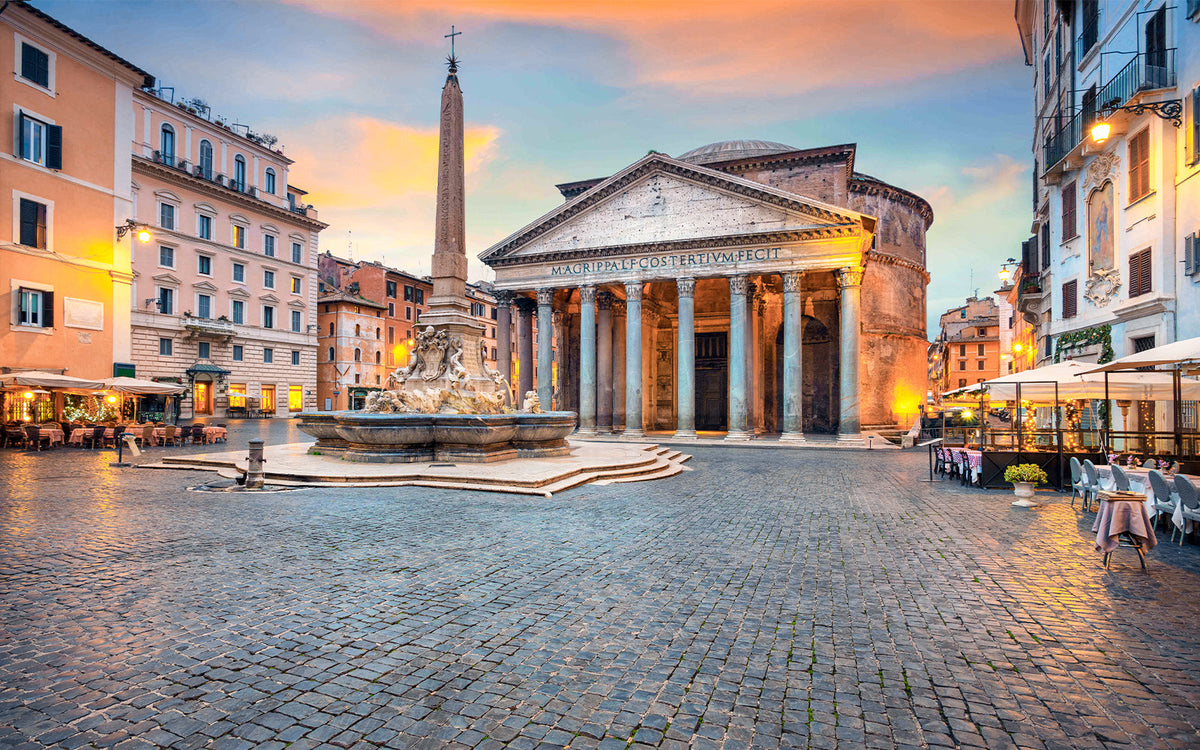
Unlocking the Secrets of Ancient Roman Concrete for Modern Construction
|
Time to read 3 min
|
Time to read 3 min
Explore the enduring mystery of Roman concrete in our latest blog post, where MIT research reveals how ancient builders used volcanic ash and lime mortar to create structures that have stood for millennia. Discover how these ancient techniques offer a blueprint for more sustainable and durable modern construction, merging historical ingenuity with today's environmental needs.
For centuries, the enduring strength and resilience of Roman concrete have captivated scholars and historians. Ancient structures like the Pantheon and aqueducts stand as testaments to the ingenuity of Roman engineering, defying the ages and inspiring awe in all who behold them. However, the precise methods and materials used by the Romans to achieve such durability have long been shrouded in mystery.
Recent advancements in materials science and archaeological analysis have provided new insights into the composition and construction techniques of Roman concrete. One of the most significant breakthroughs came from MIT, where researchers conducted a comprehensive study to unravel the secrets of Roman concrete's longevity. By examining samples of ancient concrete and conducting spectroscopic analyses, the MIT team uncovered clues that shed light on the extraordinary properties of this ancient building material.
Central to the durability of Roman concrete is the incorporation of volcanic ash and lime mortar into the construction mixture. Unlike modern concrete, which primarily relies on Portland cement, Roman builders utilized a blend of volcanic ash, lime, and water to create a composite material with exceptional strength and resilience.
The volcanic ash, sourced from nearby volcanic regions such as Mount Vesuvius, served as a key binding agent in Roman concrete. When mixed with lime and water, the volcanic ash underwent chemical reactions that produced minerals like aluminum tobermorite and phillipsite. These minerals filled in the gaps within the concrete matrix, effectively reinforcing the structure and preventing the propagation of cracks over time.
In addition to volcanic ash, lime mortar played a crucial role in enhancing the durability of Roman concrete. Derived from limestone, lime mortar was created by heating limestone to produce quicklime, which was then mixed with water to form slaked lime. This lime mortar acted as a catalyst in chemical reactions within the concrete mixture, contributing to its cohesive strength and self-healing properties.
Recent findings from MIT suggest that the Romans may have employed a technique known as "hot mixing" in their concrete production process. This method involved the use of quicklime, heated to high temperatures, which reacted exothermically with water to form calcium carbonate inclusions within the concrete. These inclusions, formed at extreme temperatures, further enhanced the mechanical properties and durability of Roman concrete, providing additional insight into the engineering sophistication of ancient builders.
One of the most remarkable characteristics of Roman concrete is its ability to self-heal over time. This phenomenon is attributed to the formation of calcium carbonate crystals within the concrete matrix, which occur as a result of chemical reactions between the concrete components and environmental factors such as water and carbon dioxide.
When cracks form in Roman concrete, whether due to seismic activity or natural weathering, these calcium carbonate crystals precipitate within the fissures, effectively sealing them and restoring the integrity of the structure. This self-healing process not only prolongs the lifespan of Roman concrete structures but also reduces the need for costly maintenance and repairs, making it an attractive option for modern construction projects seeking sustainability and longevity.
The insights gained from studying Roman concrete have profound implications for modern construction practices. By understanding the materials and techniques used by ancient builders, engineers and architects can develop more sustainable and durable construction materials for the future.
Incorporating elements of Roman concrete, such as volcanic ash and lime mortar, into modern construction methods could lead to the development of eco-friendly and resilient building materials. Additionally, the self-healing properties observed in Roman concrete offer innovative solutions for reducing maintenance costs and extending the lifespan of infrastructure projects in the 21st century.
The enduring strength of Roman concrete stands as a testament to the ingenuity and resourcefulness of ancient builders. By unlocking the secrets of this remarkable material through scientific inquiry and archaeological analysis, researchers have not only gained valuable insights into the past but also paved the way for future innovations in sustainable construction. As we look to address the challenges of climate change and environmental sustainability, the lessons learned from Roman concrete offer valuable guidance for building a more resilient and enduring future.


